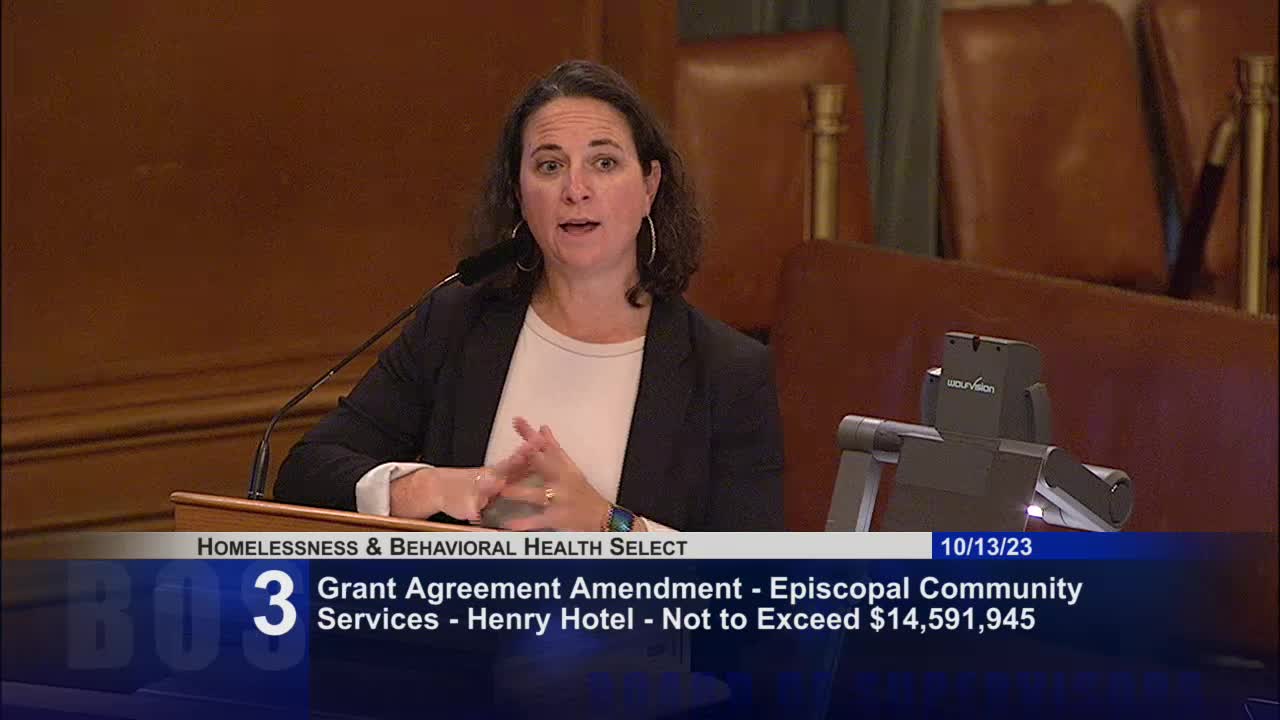San Francisco housing committee advances supportive housing goals amidst public concerns
October 13, 2023 | San Francisco County, California
This article was created by AI summarizing key points discussed. AI makes mistakes, so for full details and context, please refer to the video of the full meeting. Please report any errors so we can fix them. Report an error »

In a recent San Francisco County government meeting, discussions centered on the challenges and progress of supportive housing for the chronically homeless. The meeting highlighted improvements in the coordinated entry system, which has streamlined the process of placing individuals into housing, addressing occupancy challenges in certain neighborhoods, particularly in the Tenderloin area.
Officials noted that while the supportive housing units are intended for long-term residency, there is an ongoing conversation about the goals for residents, including potential pathways to employment and treatment. The focus remains on ensuring that individuals remain stably housed, with a target of 85% of residents achieving this stability. However, there is recognition that not all residents may need to stay in supportive housing indefinitely, and discussions are ongoing about transitioning individuals to more independent living situations when appropriate.
The meeting also touched on the demographic of those being served, emphasizing that many residents have chronic experiences of homelessness coupled with disabling conditions. This reality shapes the services provided and the expectations set for residents. The conversation underscored the importance of individualized goals, with case managers working closely with residents to develop personal plans that may include treatment or employment.
As the city continues to expand its supportive housing capacity, with plans for an additional 3,000 units, concerns were raised about the sustainability of such growth in a high-cost housing market. Officials acknowledged the need for a balanced approach to meet the diverse housing needs of the community while ensuring that resources are effectively allocated.
The meeting concluded with a unanimous recommendation to advance the supportive housing initiatives to the full board, reflecting a commitment to addressing homelessness in San Francisco while navigating the complexities of housing policy in a challenging economic landscape.
Officials noted that while the supportive housing units are intended for long-term residency, there is an ongoing conversation about the goals for residents, including potential pathways to employment and treatment. The focus remains on ensuring that individuals remain stably housed, with a target of 85% of residents achieving this stability. However, there is recognition that not all residents may need to stay in supportive housing indefinitely, and discussions are ongoing about transitioning individuals to more independent living situations when appropriate.
The meeting also touched on the demographic of those being served, emphasizing that many residents have chronic experiences of homelessness coupled with disabling conditions. This reality shapes the services provided and the expectations set for residents. The conversation underscored the importance of individualized goals, with case managers working closely with residents to develop personal plans that may include treatment or employment.
As the city continues to expand its supportive housing capacity, with plans for an additional 3,000 units, concerns were raised about the sustainability of such growth in a high-cost housing market. Officials acknowledged the need for a balanced approach to meet the diverse housing needs of the community while ensuring that resources are effectively allocated.
The meeting concluded with a unanimous recommendation to advance the supportive housing initiatives to the full board, reflecting a commitment to addressing homelessness in San Francisco while navigating the complexities of housing policy in a challenging economic landscape.
Don't Miss a Word: See the Full Meeting!
Go beyond summaries. Unlock every video, transcript, and key insight with a Founder Membership.
✓
Get instant access to full meeting videos
✓
Search and clip any phrase from complete transcripts
✓
Receive AI-powered summaries & custom alerts
✓
Enjoy lifetime, unrestricted access to government data
30-day money-back guarantee

